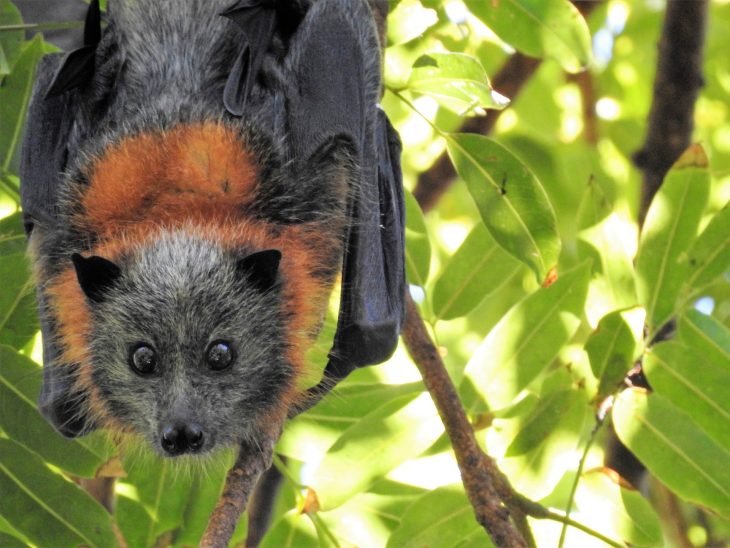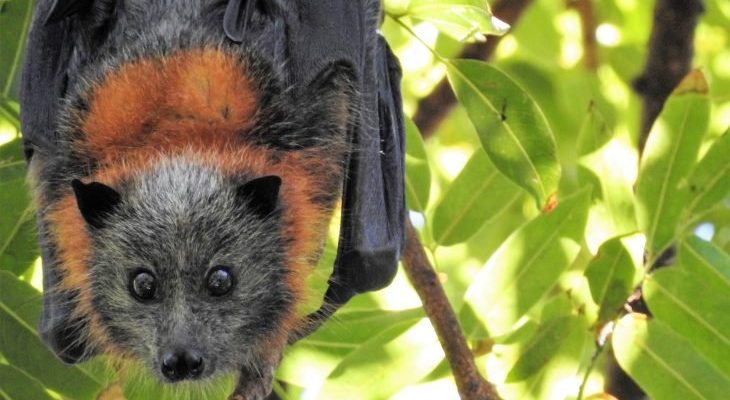
Let’s dive into some fascinating facts about fruit bats. You might say they’re the unsung heroes of the animal kingdom. By exploring their unique traits and behaviors, you’ll not only learn about these incredible creatures but also gain an appreciation for why they matter in our world. So grab your favorite drink, sit back, and let’s explore why fruit bats are so special.
1. Fruit Bats Are the Largest Bats in the World
Honestly, when you hear “bat,” you probably don’t think of something the size of a small dog. But that’s exactly what some fruit bats are! These magnificent creatures can have a wingspan of up to six feet. Imagine that—it’s like having a giant bird swooping through the trees! Their size can definitely be intimidating, but in reality, they’re quite harmless and mainly feed on fruits, nectar, and flowers.
Fruit bats belong to the family Pteropodidae and are primarily found in tropical and subtropical regions. While they might look fierce with their large eyes and impressive wings, they rely on their keen sense of smell to locate food, rather than echolocation like many of their smaller bat cousins. So, while they might fly around at night, they’re really just out searching for their next tasty snack.
2. They Have a Sweet Tooth for Fruits and Nectar
You might be wondering what role fruit bats play in nature. Well, these guys are some of the best pollinators around! They’re particularly fond of fruits like bananas, mangoes, and guavas. What’s fascinating is that while munching on these sweet treats, they help disperse seeds. This means that fruit bats play a crucial role in the growth of new plants and trees, helping to keep ecosystems healthy.
When fruit bats eat, they don’t just gobble down the fruit; they often take a bite out of it and leave the rest behind. This process not only helps with seed dispersal but also ensures that certain fruits can thrive. Think of fruit bats as the gardeners of the forest—every snack they take can lead to new plants sprouting up in the future!
3. They Can Live for a Long Time
Fruit bats, along with their fascinating behaviors, also have surprisingly long lifespans. In the wild, many can live up to 30 years! That’s longer than some pets! This longevity can be attributed to factors like their size, diet, and fewer natural predators. It’s not uncommon for these bats to form strong social bonds with one another, leading to a supportive community that can contribute to their long lives.
Interestingly, their long lifespan may also relate to their low metabolic rate—a trait that helps them conserve energy, especially when food is scarce. So, when you see a fruit bat flying around, remember, it could be an impressive elderly fellow who’s seen a lot in its lifetime!
4. They Have Excellent Vision
You might think that bats are creatures of the night with poor eyesight. However, fruit bats have incredibly sharp vision, particularly in low light. They rely on their sight more than echolocation, which is typical for many other bat species. This exceptional vision helps them to navigate through the trees and locate ripe fruits.
Their large eyes are adapted for detecting movement and seeing in dim light, making them well-equipped for their nocturnal lifestyle. This ability is crucial not just for finding food but also for social interactions within their colonies. Just imagine what it must be like to soar through the night sky, spotting a ripe mango from high above!
5. They Live in Large Colonies
Fruit bats are social creatures and often gather in large colonies that can consist of thousands of individuals. These colonies can be a breathtaking sight, especially when millions of bats take to the sky at dusk! They roost together in trees, caves, or even buildings, providing a sense of community.
Living in groups has its advantages. It helps with protection from predators and allows for socialization and communication. In these colonies, bats can often be seen grooming one another, which is essential for maintaining social bonds. It’s like a furry gathering where everyone pitches in to help out a buddy!
6. They Have Unique Sounds
If you’ve ever heard a fruit bat, you know they don’t sound like the typical screeching bat you might expect. Instead, they make a range of vocalizations, from soft grunts to louder calls. These sounds help them communicate with one another, especially within their large colonies. It’s sort of like a vibrant chatroom in the sky!
Interestingly, their vocal range is low enough that humans can’t always hear it, but it’s crucial for their social interactions. Whether they’re warning others about danger or simply chatting, these sounds are a vital part of their life. Just picture thousands of fruit bats chattering away in the trees—it’s like a lively coffee shop for bats!
7. They’re Important for Ecosystems
Let’s talk about the bigger picture—fruit bats are essential players in their ecosystems. As pollinators and seed dispersers, they help maintain biodiversity. By feeding on fruits and nectar, they assist in the growth of countless plant species, which in turn supports various animals and insects.
Without fruit bats, many plants would struggle to reproduce, leading to a ripple effect through the ecosystem. This highlights just how interconnected nature is; each species, no matter how small, has a role to play. So, next time you see a fruit bat soaring through the trees, remember they’re contributing to a healthy environment.
8. They Face Threats from Human Activity
Unfortunately, fruit bats are not without their threats. Habitat destruction, hunting, and climate change have all taken a toll on their populations. Deforestation, in particular, is a significant issue as it reduces the number of places where these bats can roost and find food.
On top of that, some species of fruit bats are hunted for their meat, and their guano (bat droppings) is collected as fertilizer. While some of these practices have cultural significance, they can be detrimental to bat populations if not managed sustainably. It’s important to spread awareness about the challenges these creatures face so we can work toward their conservation.
9. They Have Unique Adaptations
If you think fruit bats are fascinating, wait until you hear about their adaptations! These bats have unique physical traits that help them thrive in their environment. For instance, their long wings are not just for show; they allow for great maneuverability in flight, which is essential for dodging branches and catching insects on the fly.
Moreover, their strong sense of smell helps them locate overripe fruits that other animals might miss. This adaptation gives them a competitive edge when they’re foraging. So, you might say that fruit bats are like the ultimate scavengers of the fruit world, always on the hunt for the tastiest morsels!
10. Conservation Efforts Are Underway
You might be wondering what can be done to help these remarkable creatures. Luckily, various organizations and conservationists are working hard to protect fruit bats and their habitats. Initiatives include creating protected areas, promoting sustainable farming practices, and raising public awareness about the importance of bats in our ecosystems.
Additionally, many countries have laws against the hunting of certain bat species, aiming to restore their populations. Educating the public about fruit bats can foster a greater appreciation for them, leading to better protection efforts. So, whether it’s through volunteering or simply spreading the word, every little bit helps!
In conclusion, fruit bats are not just fascinating creatures; they’re vital to our ecosystems. From their impressive size and social habits to the roles they play in pollination and seed dispersal, they truly deserve more recognition. By understanding and appreciating these remarkable animals, we can take steps to ensure their survival for generations to come. So next time you see a bat glide overhead, remember—they’re not just flying by; they’re doing important work for our planet!

